
Бесплатный фрагмент - St. Petersburg Island
Phototravel to History…
From the author
Here, and again we met, dear reader! Our first meeting happened as it is remembered, on Trinity Bridge (see Valery Pikulev and Valery Gulyakin’s first book: “Acquaintance to St. Petersburg. Photostory about the Great City”). Then, already as boon companions, “stormed” we bastions of the St. Petersburg fortress (and it already in Valery Pikulev and Valery Gulyakin’s second book: “St. Petersburg fortress. Photostory about the Peter and Paul Fortress of St. Petersburg). Now acquaintance to a right-bank part of the historic center of St. Petersburg is necessary to us (and it, this “center”, occupying the space more than 30 square kilometers, covers both the Peter and Paul Fortress, and the right coast of Neva, and left… and to the Shooter of huge Vasilyevsky Island… — and all this waits for us still ahead!)
And so far we will go to wander about the enormous island of the delta of the Neva River adjoining from the northeast a small island on which the St. Petersburg (Peter and Paul) fortress was built… and where we already visited last time. We will be helped with this travel by stunning with the skill, fine photos executed by Valery Gulyakin.
Yours faithfully! Valery Pikulev
First inhabited house of St. Petersburg
The island about which the speech will go in a century before last called St. Petersburg, and at the time of Pyotr — at first Koyvisaari, then already, in Russian, Beryozovy, then Gorodovy (City) island. Now Petersburgers call the island the Petrograd Side.
It is the best of all to begin acquaintance to this island, perhaps, with that place where the St. Petersburg’s first house was built… Go, and we will modestly bow to the first inhabited construction of our Great City which so happily remained … — give, approach Cabin of Peter the Great.
So, the city began to be built up, exactly, from here — from a small one-storey timbered “monarchic lodge”. The house was cut down from pine logs by grenadiers of the Semyonovsky regiment in three days, — by May 26, 1703!
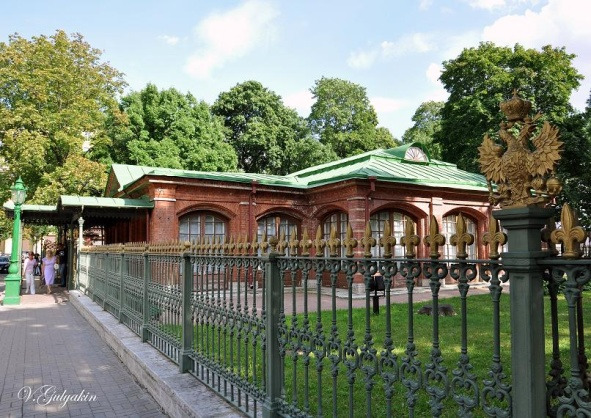
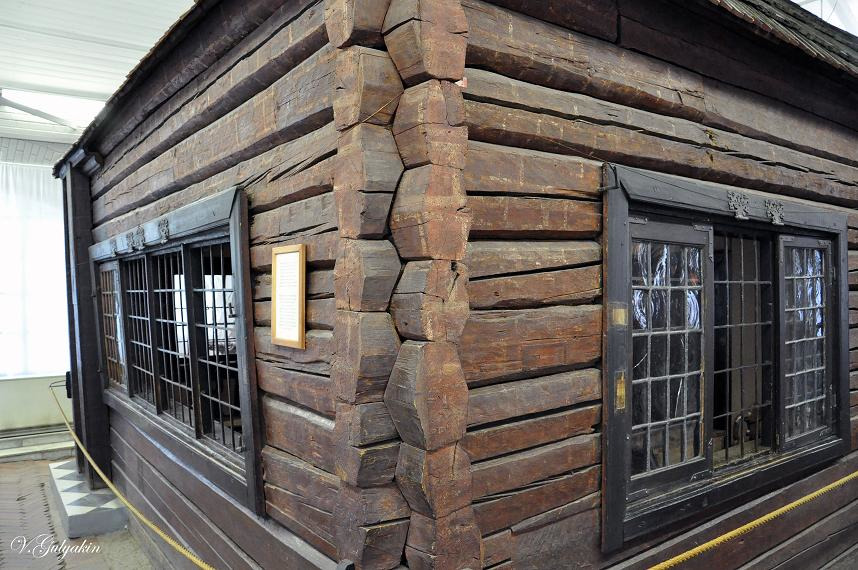
Here so all also began! These are then already great “guest workers” of the past, — Domenico Trezzini, Francesco Bartolomeo Rastrelli, Antonio Rinaldi, Jean Baptiste Valen-Delamot, Etienne Falcone, Giacomo Quarenghi, Vincenzo Brenna, Charlz Cameron, Thomas de Tomon, Luigi Rusca, Karl Rossi, August Montferrand … — it is already created then by their genius all that stunning magnificence which is now called St. Petersburg! And in the beginning there was this lodge…
“Red mansion” as called then a monarchic lodge, was worked in three days, without efforts and troubles: an outer entrance hall in the middle, on each side … — at Russians so did not build two little rooms with wide windows. And that as, — more than hundred years here Swedes managed! — here also semyonovets copied a usual Swedish log hut which in the siikh places only and met. Built quickly and without special inventions!
Already shortly before Peter death the architect Domenico Trezzini built, being afraid of floods, so frequent in these parts, stone protection around a lodge. And in 1731 “the tsar lodge” was covered, wishing to keep it for descendants, wooden construction. In 1784 over this construction established the stone case which accepted in 1844 present outlines in style of Petrovsky baroque. Still later, from 1872 to 1875, also the garden with Peter I’s bust appeared.
Main square of the Empire
And now, having bowed to Pyotr’s lodge, we will go along the Neva Current to Trinity Square, is absolutely nearby, a stone’s throw away! — and from its party once again we will admire our handsome, — Trinity Bridge.
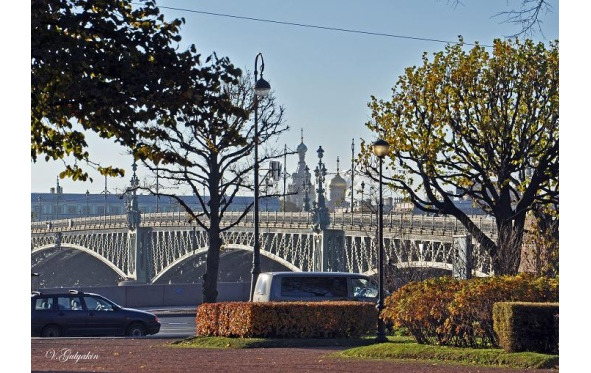
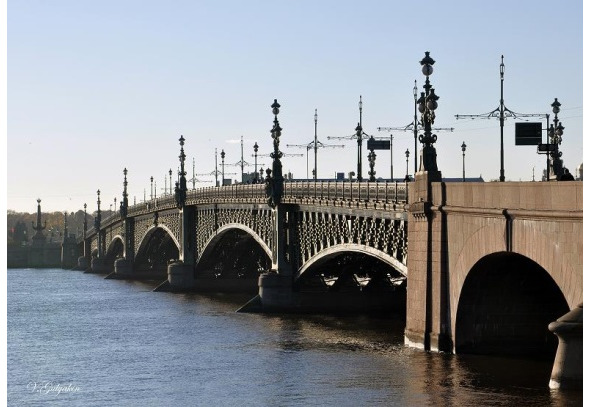
Trinity Square… Red Square in Moscow, even Palace — in St. Petersburg, — cannot apply for the status of the Main square of Russia at Pyotr! This status by right belongs to Trinity Square, oldest in the city! Exactly here the tsar Pyotr accepted the Emperor’s title, and Russia became the Empire! There was it on October 22, 1721 in Holy Trinity Cathedral from which and the name of the area went.
This temple was built in the center of the area in 1710 on Domenico Trezzini’s project — in honor of a victory over Swedes near Vyborg. It long time remained the main temple of the city. On the square, near the temple, imperial decrees were announced, parades and reviews of troops were organized.
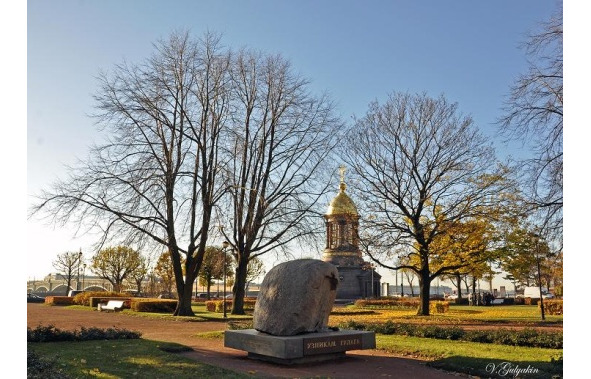
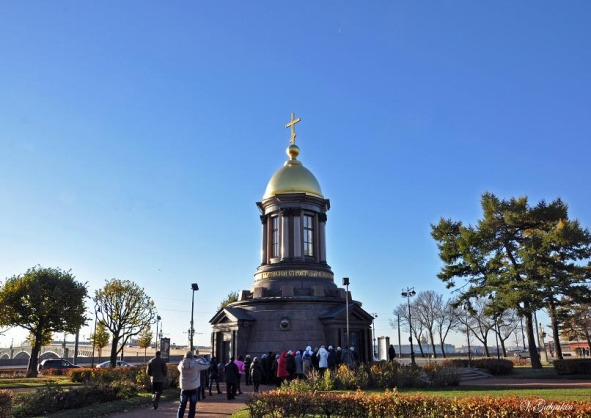
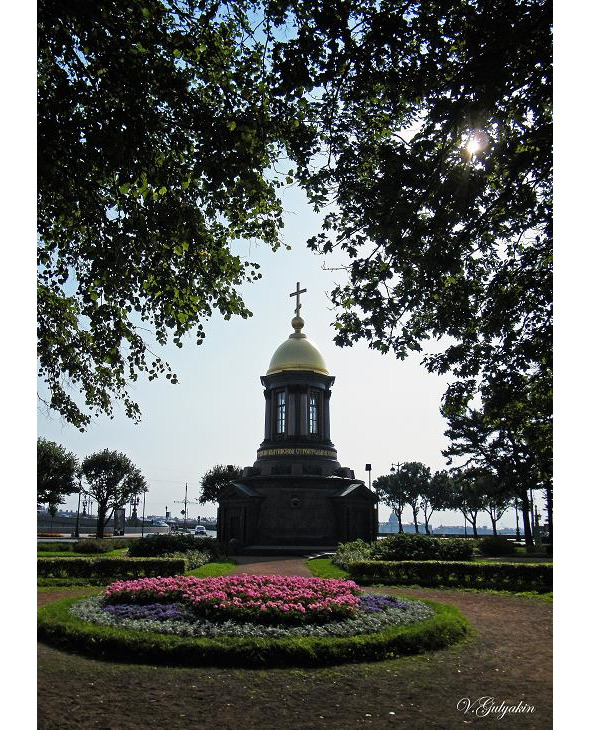
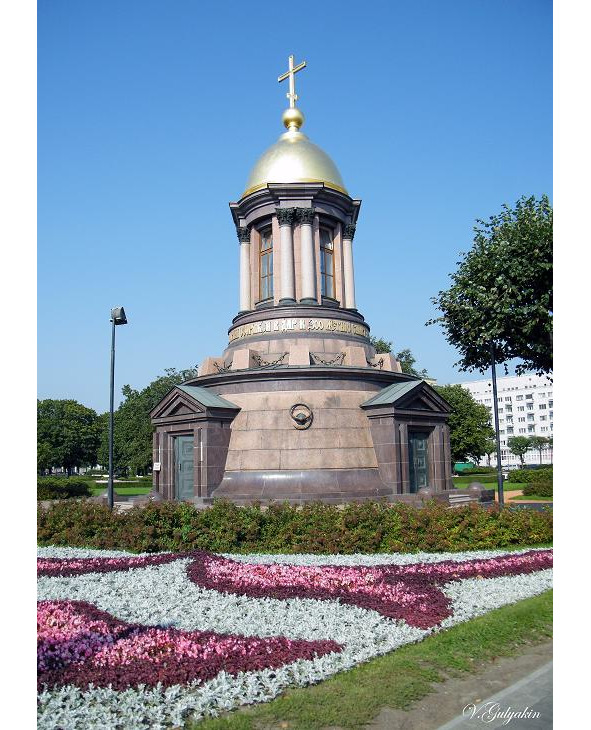
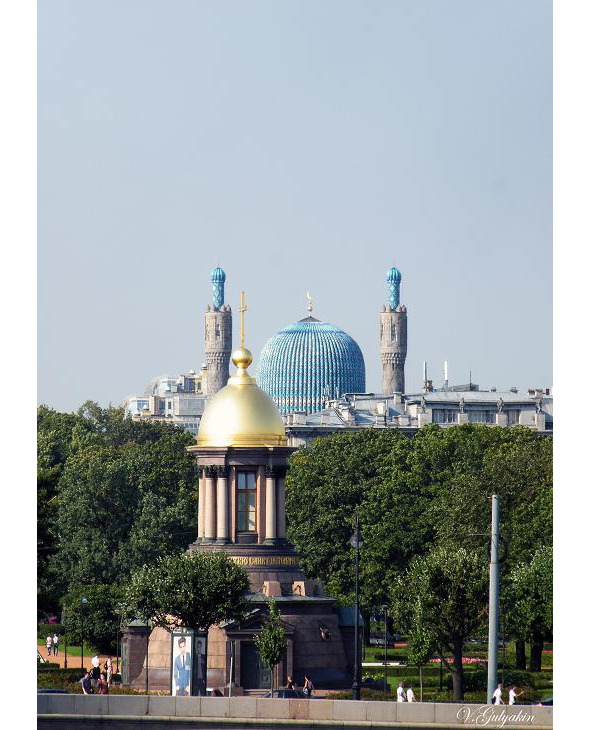
Here, at Trinity Square, in 1714, the Russia’s first Triumphal arch (besides on the Trezini project), — in honor of the first large victory of the Russian fleet at the cape of Gangut was erected. On the square the Senate and the Synod were also located. Still earlier, in 1705, there was also the city’s first Gostiny Dvor, and on the bank of Neva — port and customs.
On the square arose also the first food market, — Obzhorny, — and the first city printing house printing decrees and resolutions… and the first bookstore. It remained only in the city till 1760. And in the St. Petersburg’s first tavern of Austeriya which appeared besides at Trinity Square, also the tsar Pyotr, the big fan of beer and a game in chess liked to look…
In 1923 the area was renamed into “Revolution Square” … — however, we will have enough revolutions! — and since 1991 it bears the real name again.
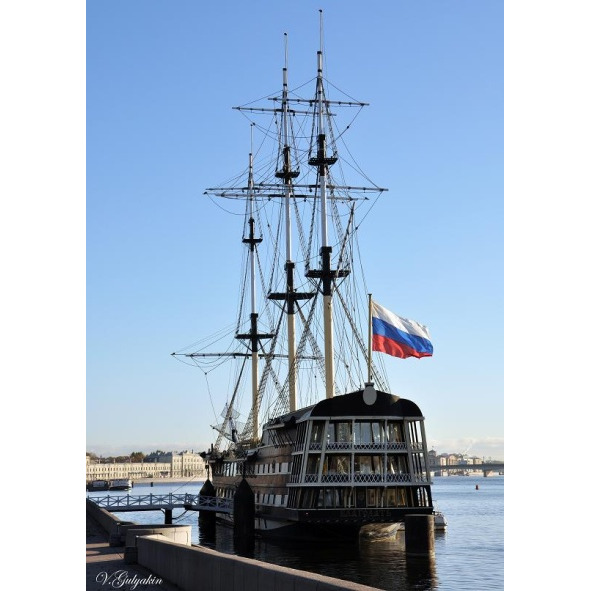
Finishing the story about Trinity Square, I cannot but tell of what occurred at it during the salute in honor of full lifting the blockade of Leningrad. And there was it on January 27, 1944.
Here, I write, and and the hackneyed stamp asks for a line: “tears of joy”! — But is not present, not here. Not in this case!
According to stories by mine of the grandmother and mother, the people who gathered then on the square — from those who could move even after 872-day hungry blockade, after the longest in the history of all times (three years, one month and two days!) fights to the country! — of course, rejoiced! — Yes! They joyfully looked into the sky decked by salute fires… being ready to drop at each its volley! Yes! They cried with happiness… but without tears! — At their exhausted people was not, — tears just did not flow! Now, gathering these lines, I cannot constrain them, but then…
— No, did not know, the tsar Pyotr what price descendants will be fated to execute his order: “… to hold this place, even unto death!”
Aleksandrovsky park
Let’s descend from Trinity Bridge and, without turning anywhere, we will go north, on wide Avenue. On the right — Trinity Square, at the left … — And here, at the left just will also rustle with foliage the Aleksandrovsky park.
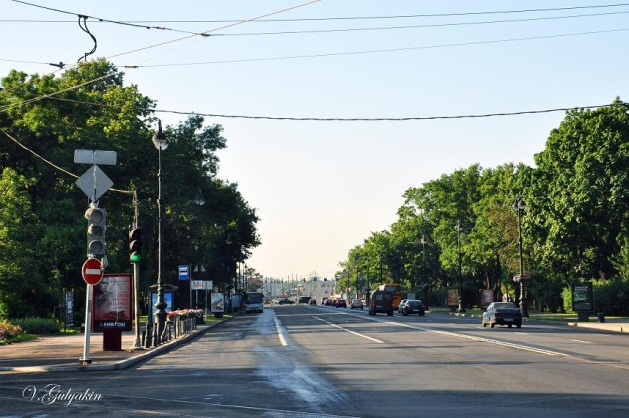
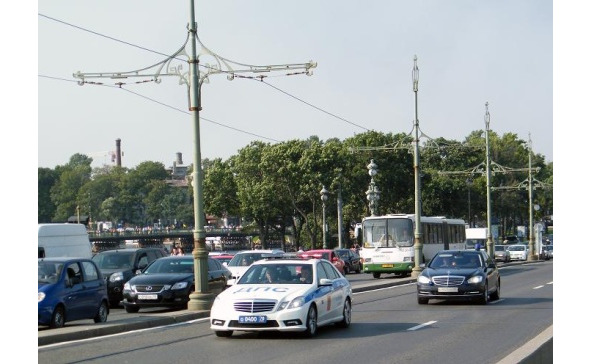
Aleksandrovsky park … — It is, perhaps, the first park in St. Petersburg for “commonalty”. The glacis of the Peter and Paul Fortress once was at the place of the park: open space from the North, behind the Kronverksy passage, created for defense and well looked through from fortress.
For the first time a thought to arrange the park here appeared at the Emperor Alexander I. The architect Menelas even prepared the project which, however, due to various reasons, was not realized by order of Alexander. There passed years. The thought of creation of the park visited also the Minister of Finance Kankrin, — to him who was often as obliges on Mint bothered to wander about the waste ground to and fro, here he also offered (already to the Emperor Nicholas I) to improve a route of the foot walks.
The idea was pleasant to the autocrat: Kankrin suggested to carry out it due to savings of the ministry, without asking anything from treasury! It was in January, 1842, and in February the project was already approved.
The new park was broken into two parts: east and western. East part was transferred to the jurisdiction of Mint. Kankrin personally approved the prices and the menu of the restaurant which opened here (vodka on 5 and liqueur on 10 kopeks a glass); also institutions of mineral waters were provided. In the park laid a circular path for ride, nearby — and a walking path. Established arbors, a lodge coffee house, sandboxes for children. Arrangement of the western part of the park was charged to Head department of means of communication and public buildings which was headed by the count Pyotr Andreevich Kleynmikhel.
The park was called by Aleksandrovsky in memory of the Patron saint Grad on Neva, the Blessed prince Alexander Nevsky. The first festivity took place in the park on August 30, 1845 (on old style) — to Alexandrov day.
Today the Aleksandrovsky park — the real “green” pearl of the city! It is a successful example of caring attitude of the city authorities to vacation spots of citizens. The park blossomed in all the beauty, surprisingly harmoniously combining magnificence of natural landscapes with sculptural compositions of small forms! Well, you look…
Бесплатный фрагмент закончился.
Купите книгу, чтобы продолжить чтение.
